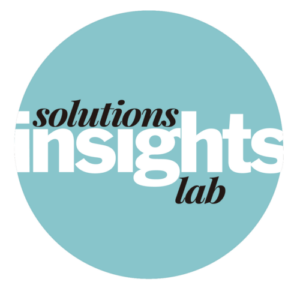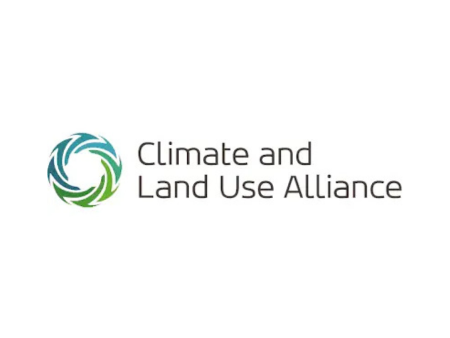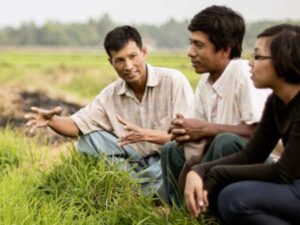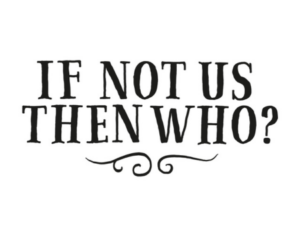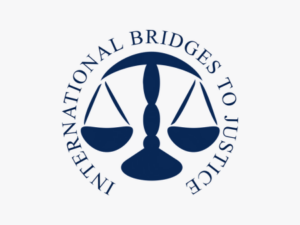Climate and Land Use Alliance is a collaborative of foundations with a shared focus on the interdependence of people, tropical forests, and the climate.
Silvia Gomez of Climate and Land Use Alliance spoke with Ambika Samarthya-Howard on October 15, 2025. Click here to download and read the full interview.
Ambika Samarthya-Howard: Tell me about your work.
Silvia Gomez: I have many lives, many personalities. I’m an anthropologist. I’m Colombian, and I’m based in Bogota. I did anthropology at the university, and then I did a master’s degree at Schumacher College in holistic science and economics for transition. And since very early, I’ve been involved in the Amazon forest, working with local communities, with indigenous communities, and peasants on this connection between environment and culture, and how this interacts, and how ancestral knowledge is actually present in all these efforts for conserving the tropical forests. I lived in the Amazon forest for 10 years with Gaia Amazonas.
Ambika Samarthya-Howard: On the Colombian side or the Brazilian side?
Silvia Gomez: It was the Colombian side, but right on the border with Brazil, on the Rio Tiquié. I was coming for 10 years until I said, OK, what’s happening in the world? I am not only an Amazonian anthropologist. That’s when I decided to study, so I did holistic science, because it was very frustrating for me to think of ethnobotany or linguistics. It’s so narrow, and after living 10 years with this holistic view of the world, I was like, this can’t happen.
I was lucky enough to bump into Schumacher College. It’s in the UK, in Devon. I call it a Western ashram. We had really good teachers, like Nobel prize laureates, Vandana Shiva, Gustavo Esteva, a lot of really interesting people. Cooking, meditating, gardening, cleaning the toilets, and [practicing] a holistic view of the world.
The beauty of it was we would have lectures with Vandana Shiva, but then we would go and chop onions and do the cooking for everybody at the college, and then clean the toilets, and then go gardening. We spent a whole week with her just living and understanding all her magic, but also James Lovelock, the Gaia theory. It was amazing, and it was truly holistic. I was doing research, at the same time, looking after my spirit and cultivating the body, and cultivating intuition. It was one of the most amazing years of my life.
Ambika Samarthya-Howard: Before your studies, what were you doing with Gaia Amazonas in the Amazon?
Silvia Gomez: I was coordinating an interdisciplinary group that was working in a river basin in the Amazon forest. I was an anthropologist, and there was a biologist, one linguist, and a couple of teachers. I was coordinating this team. The idea was to accompany the Indigenous communities of these two rivers—they’re 18 or 20 communities—to actually keep their knowledge and keep their traditional systems, and at the same time being part of a country and all the legal frameworks. We had health programs, education programs, environmental programs.
I was working with women recuperating seeds and enhancing the transmission of their knowledge to be autonomous and self-sufficient. At the same time, we had to work with lawyers. We were writing a book with youngsters. We were writing down the alphabet for the first time, so that they could [document] what their native languages were saying. There was a big gap between elders and youngsters, so we became like a bridge. The youngsters became their own anthropologists. It was really beautiful. For 10 years, they recuperated a lot of seeds. They recuperated a lot of traditional rituals, like rituals of passage.
The work in the Pira Parana River and Apaporis River was truly about resilience. How to maintain traditions, essential cultural knowledge systems while adapting and dealing with the challenges of being part of a centralized state. It was this bridging between western culture and a very traditional culture that they still have, so translating and understanding what it means to be part of a country, but at the same time being an isolated tribe and not having to lose your own knowledge for the sake of being part of a country.
Ambika Samarthya-Howard: Is that how you would define the work that you’re doing now? Are you mostly trying to bridge this gap?
Silvia Gomez: Basically, I consider myself a connector, a bridge, a translator, in a way, of two worlds that don’t really know each other’s value. It’s in the emergent properties that come with the interaction between cultures, the interaction between people, the interaction between ways of seeing the world, that new solutions and new ways of understanding the complexity emerge.
If we don’t interact, if we don’t show up, if we don’t share, if we don’t explain, if we don’t recognize, then I feel that we are going back to this tribal way of living. It’s my tribe. It’s my idea. It’s what I think. That’s what it is. We are isolating ourselves.
My experience at Schumacher College was amazing because I had always thought that traditional cultures were one world and western cultures were another world, and that they couldn’t really connect, or that they were aiming for completely different outcomes. When I arrived there I saw, well, this is very holistic in that it’s not quantitative versus qualitative, but it’s a mixture of both. It is not being a researcher, describing what I see, but showing up and being part of the phenomenon. We did a lot of phenomenology. This is how indigenous people feel.
They are not describing nature; they are nature. It’s like these different ways of understanding science and understanding the connections, why bacteria has a lot to do with physics and chemistry and poetry and music. It was really interesting because ancestral knowledge was not opposed to science. There are a lot of ways in which we can connect with each other.
Since then, I worked in the Ministry of Culture, and I did a lot of advocacy for the recognition of rights and knowledge. Then I put on my activist T-shirt, and I was the head of Greenpeace Colombia for eight years. I worked on banning asbestos and banning single-use plastics, and banning coal in the moors. After 10 years, I said, OK. I’m reaching a very interesting age of my life, and I feel that I want to plant my seeds not in the activist world, where everything is wrong and everything needs to be changed but you don’t contribute with solutions. Then I came back to Gaia Amazonas as CEO. For two years, I was leading the organization, which was like a big monster, like 300 people.
Ambika Samarthya-Howard: How would you describe Gaia Amazonas?
Silvia Gomez: Gaia Amazonas is an NGO, a civil-society organization that has been working alongside Indigenous communities as partners. It is a bridge. It has always done this work of communicating, of translating, of using Western tools like lawyers and research and journalism to enhance indigenous cultures. The principle that underpins the work is intercultural interaction with the two cultures so we can actually come up with solutions.
For example, for education, we were training the teachers to be teachers in their own schools, with their own languages, and not having to use materials that come from Africa or from the US, but their local materials with their local languages. In terms of health, also, we were supporting the preventive system that they use, and we were asking the government to pay for it.
Basically, Gaia had three main objectives. One was to guarantee land tenure, so that Indigenous people could be owners of the land, and that’s when resguardos were recognized. Second, to enhance the legal system so that these governments could be recognized. The legal system needed a lot of adjustments to recognize that Indigenous people were not only owners of the land but were capable of governing the land. The third objective of Gaia Amazonas was to help these communities to be their own governments, which is a hell of a challenge. You have the land, you have the laws, you are recognized, then how do you do it? How do you come up with decision-making processes? What are you planning? How much does it cost? That’s what they are doing now.
Ambika Samarthya-Howard: Tell me a little bit about the third one. What did you find to be successful in doing that?
Silvia Gomez: Well, it’s like walking your talk. You have the land, you have the recognition of the state; the big challenge is how you actually exercise governance in your territories. I think it has been successful in the sense that they are now having really interesting intercultural encounters with different institutions of the government. For example, after a lot of lawsuits, they managed to be recognized as an environmental authority of their territory. They can actually decide whether any project, any mining or deforestation, or any environmental permit has to go through them. But exercising that in coherence, it’s a hell of a lot. They also have to coordinate with other governments.
I think that has been successful. Come up with proposals, come up with plans, come up with alternatives that could enhance systemic change. They now know what is their plan, what they want to do, why they are the best government in their territories.
Ambika Samarthya-Howard: There are two tricky parts of this. One is that there are so many different Indigenous tribes and Indigenous territories. All of them have different laws and different governments. How do they interact with each other? The second is, when Brazil interacts with Colombia, there’s a very formalized system of cross-regional interaction that comes through state departments, through the UN, through presidents and prime ministers. When the tribes have their own governance and laws within a country, who do they interact with? Do they interact on the national level or on the regional level or on the community level?
Silvia Gomez: All of them. That’s the challenge and that’s the beauty of it, that as governments, they have had to knock on doors and coordinate with their own communities. For example, in the northwest Amazon of Colombia, they have created a kind of a province, because they know that the interaction with a single community is a mess. They have to agree with each other and then come up with joint proposals. They have to first agree among themselves, then interact with the department level, which is the most difficult one because, at least in Colombia, most of the laws on recognition of rights are at the national level.
Then, when you go one level below, it’s very difficult, because the governors and the local governments don’t really recognize Indigenous voices and Indigenous autonomy. That’s very tricky. That’s the work, and that’s how Gaia Amazonas has helped them and supported them in advocacy around the whole circle. Whatever happens in your community has to inform the regional level. The regional level has to inform and change the national level, but what happens in the national level has to contribute and influence the regional, and the regional and the national have to influence the local. That’s the role that they are now playing.
They’ve been gaining a lot of space in coordination with the Ministry of Environment, with the Ministry of Interior, with the Department of Planning. We are supported by philanthropy or by international cooperation, like Norway and the UK have been instrumental for this work. They’ve managed to come up with these laws and these changes [with the help of] the Norwegian government, the German government, the UK government. I think it needs adequation on both sides. The national system needs to adequate to incorporate these territorial entities, and the territorial entities also have to adequate themselves to be part of a system without losing their essence.
Ambika Samarthya-Howard: In your role, do you help them write the proposals? Do you help them take the proposals to the departments? How did Gaia Amazonas plug into that system?
Silvia Gomez: Let me go back a bit. I led Gaia Amazonas for two years, and now I am working for CLUA [Climate and Land Use Alliance]. Now I am the coordinator of the Colombia and Peru initiative. For the first time in my life, I am on the side of philanthropy. This is the first time that I am giving the money and not spending the money. Actually I’m assessing what’s there, what are the gaps, what are the needs, how the Moore Foundation, Ford Foundation, Packard Foundation that are part of the CLUA alliance can make a greater impact in the Colombia and Peru Amazon.
I’m on the other side. It’s super interesting because all my life I’ve been implementing and doing the work hands-on. There was a moment in which we were writing the proposals, but then we transferred that knowledge to the leaders and said, “You do the process, and we’ll revise it, and we’ll help you to improve it if it’s needed, but now you do it on your own.” That accompaniment has been changing a lot.
I feel that just at this point in history, all the NGOs and the Indigenous governments, now that they are recognized and they’re governments, they are both rethinking their role. I think it’s a very interesting moment in which each of them, like NGOs, big BINGOs, small organizations that work on very specific topics, are rethinking and evaluating, “What is our niche? What is it that we do that nobody else can do?”
Indigenous governments are reclaiming autonomy, are reclaiming direct funding, are reclaiming that they are now capable of doing and taking decisions and spending the money, and doing everything by themselves. NGOs are saying, “Yes, but what about accountability? What about responsibility?” This is something that we need to do together, because we’re not wiping out NGOs and then giving all the money to Indigenous organizations.
From the philanthropy side, I see there is a danger in being a bit hypocritical, in saying, “I do direct funding, but I don’t care about the how.” We should be caring about the how because giving money to somebody or an organization that is not fully ready can really fracture a government, can really end the whole political process. We need to be responsible for the effects, and we need to be sure that nobody is carrying a heavier bag than they can carry. That’s a process.
There is a tension, because Indigenous governments say, “Give us the money. We don’t need intermediaries.” To be honest, I hate that word. It’s not intermediaries, and Indigenous people are not beneficiaries. We are all partners. We are all allies. We are all agents of change. We are all political actors that want things to be different. Funders are also key actors. I don’t like that word “intermediary” because we are not intermediating. We are all contributing, we are all thinking together, we are all contributing with different solutions.
I think what Gaia Amazonas does differently with Indigenous people is consistency and time. It’s a long-lasting process. They’ve been working together for 30 years. That connection and that trust is something that you don’t buy in the drugstore. It really takes a lot of time. Sometimes you feel that you are repetitive and that you don’t really move forward. I feel that it’s an iterative process. Every round you move forward a bit.
It’s about understanding from the Indigenous perspectives what is needed and how we accompany them to be more effective, to be more cohesive, to be more autonomous. There are many organizations that do that. The territory is also huge. Gaia Amazonas is enhancing and promoting this network of allies from the Pan-Amazonian region, like the Northwest Amazon Alliance, which is NGOs and Indigenous governments from Colombia, Venezuela, Peru, Bolivia, Ecuador, Brazil, and the Guianas. That connectivity is key. It’s about enhancing local processes, but with a regional vision. CLUA is supporting the Northwest Amazon Alliance and is also supporting Gaia.
Ambika Samarthya-Howard: Could you be a bit more specific about what you’ve learned as a funder? You were saying it doesn’t always work to just give. You need to develop. You don’t want the bag too full. Then how do you do it? What would be your advice to another funder?
Silvia Gomez: I would have three. One is, in this Amazonian world, and with communities, you need to be in the ground. The connection between local and global is key. You need to have teams that are hands-on, on the ground, really understanding what the needs are. Beyond your own strategic planning, your own objectives, you need to fund and support what emerges on the ground—in a way, being a decolonized funder. Being open not only to thinking that you are transforming a reality but being able to transform yourself in the process. Being vulnerable enough that when they come up with a proposal that doesn’t really fit your plan, you as funder need to make space for that, need to make room for that, and need to trust. The local perspective is very important, but that needs to be combined with the global perspective.
My second advice is to be flexible enough to understand that nowadays the crisis is part of our world, is part of our daily life, the political changes and the fractures and the right-wing thing and this climate crisis. That’s something that we need to incorporate in our system, and be flexible with our planning. We plan, but we need to be aware, open, and clear about what happens. Be flexible, and that’s easier said than done.
Ambika Samarthya-Howard: I was about to say, it sounds beautiful when you say transforming yourself while you’re transforming a system, but most people don’t achieve that in their lifetime. To me, that’s the hardest work. I’m curious not only how you get there, but maybe some successes that you’ve had with that.
Silvia Gomez: That was my third advice, which is that this is all about long-term relationships. It is about really building that connection, building that communication, being there. Willing to be part of the whole system and showing up properly. It’s not only giving the money and walking away. It’s about the uncomfortable questions, like being aware of unintended consequences, or some tensions that you might be creating while you support one group and don’t support the other, or give the money to the person that was not capable of administrating the money.
You need to be there to actually mitigate that tension. As funders, sometimes we feel that we have the power, we give the money, and then we walk away, and we don’t really follow the steps after you give the money. We need to be there. Not to impose what needs to be done, but to take ownership of the consequences and to have those conversations. I think that one of my successes has been to try to bring other voices, other actors, and other sectors to the conversation.
It’s easy to preach to the converted. We all care about Indigenous women. We all care about environmental issues. But what does that mean? For example, we won one of our campaigns to ban asbestos because I went to the university and spoke to the researchers, saying, “We need to do it together. You have been working on this for 20 years, but nobody knows what you have discovered. I am not an expert, but I am a good communicator, and I have people that can support what you have achieved.” He said, “I don’t believe in that. That’s bullshit. I’m not going to the news. That’s noise, but in the end, nothing changes.” I was like, “Nothing changes if nothing changes. Why don’t we work together? Let’s try it out, because we need to do things differently. You’ve been going to Congress and nothing happened. This bill has been rejected seven times. This is our opportunity. We need to bring young people, we need to bring the universities, we need to bring the government, we need to bring the victims. We need to bring the activists.”
We did it. The collective is very important and it’s what I am obsessed with. We work together from different perspectives, from different strengths, from different weaknesses, but if we don’t do it together, interculturally, interdisciplinary, I don’t think we are going to achieve it.
Ambika Samarthya-Howard: What mistakes have you made? What have been the biggest challenges that you face, outside of buy-in?
Silvia Gomez: A lot. First, it has taken me a whole life to actually trust that my intuition was right. Because 30 years ago, a woman working for Indigenous people, working for environmental issues, it was like, “Oh, you are so naïve, so cute. You want to change the world. You want to save the world. It’s so lovely, but what are you going to be doing? How are you going to make a life out of it?” It has been a process to realize that I am not actually naïve, that the world is changing. Nobody wanted to dance with me 30 years ago, but now everybody wants to invite me to the party. That’s something that it’s also very challenging, in the sense that the egos start to make their own mess.
The world has changed. Environmental issues, Indigenous people, the Amazon are part of the agenda, but this is not about individuals. Just understanding and dealing with the fact that it’s not about me, it’s about what I connect and how I bring people in. I struggled with my ego as well, because it’s like, “Everybody wants to have an interview with you and you’re so charming.” It’s like, “Hang on. No. Calm down. This is not about me. This is collective. This is a mission, but it’s not about an individual.” I am like a tool. I am like an instrument. It’s not about me. That’s hard, to be super honest.
That leads me to another very difficult one, which is saying no—setting my boundaries. It’s very difficult. Personally, professionally, there is always another layer that I am opening and opening and opening, and then I can’t cope with all of the layers that I’ve opened. How to prioritize? By prioritize, I mean not doing things in order to prioritize others. I struggle a lot with that. Sometimes I feel like I am doing a bit of everything, but not fully doing what I need to be doing, because I am dealing with all these huge things. I’ve finally understood that by personality and by nature, I am not a specialist, I am a connector.
I oversee the whole thing, so I throw the arrows, and then I need people in my team to actually make them happen. I’ve tried to be kind with myself. I am super harsh with myself as well. Like, “Oh God, I created all this and then I haven’t been able to really follow it up. This is not good enough.” So I end up getting sick. Nowadays I have a really horrible pain in my back.
You need to take it slowly. Finding the right balance, finding boundaries, learning to say no. I don’t know how to say no. Also, as I was saying, really keeping vulnerable. The older you get, the stiffer you become. Actually, doing that personal work, that’s how I met Isabel [Cavelier, of mundo común], because while I was at Greenpeace, we brought the Holistic Science course to Colombia with Efecto Mariposa and Schumacher College. We adapted it to the Latin American context, culture and philosophy. I had two jobs, as an activist and as a facilitator. Which was hard but really complementary. Doing soul work while working on public spheres is key!
That’s when she realized that she wanted to quit and start doing mundo común, because it was this deep inquiry. You can’t be a leader and a CEO without doing the soul work. That’s another lesson: without that balance, without doing the public and the soul work, you lose it.
Ambika Samarthya-Howard: I’m curious what you think of COP. Will you be at COP30? And what’s next for you?
Silvia Gomez: That’s a big question. One of my obsessions has been to support communities in understanding what happens beyond and after CBD [Convention on Biological Diversity] in Cali and COP in Brazil. This has been a very important couple of years, because it was the first time that we had this global momentum in our region. We really needed to take advantage of the political moment to bring the agendas, bring attention, and to speak to the non-converteds, to the people that are not with us yet.
I think that has improved. What happens next, for me, is we will be facing a very difficult year in 2026, because elections will be coming in Brazil, Peru, and Colombia. Lula and Petro, with all the mistakes that they have made, they’ve opened up the agenda for environmental issues, for diversity, for people power. And that is going to change.
This is the moment in COP when we need to choose our battles very clearly and say, what are the non-negotiables? Civil society organizations, along with Indigenous parties and local community movements, are going to get together and fight in a very strategic way. This is delegate activism that we need in order to not go backwards with some of the victories that we have achieved.
What’s challenging is how civil society organizations alongside communities and movements are going to resist, and are going to be intelligent enough to deal with the tendency of the right-wing governments. For example, during New York Climate Week, I was surprised, because we were all very disappointed and we were all hopeless that what was happening was so horrible. You could see that after the work of 30 years of building communication, of enhancing dialogue, we are in a different moment. I could see Indigenous leaders with national governments speaking one-to-one, government-to-government, and really understanding each other and understanding that we are under threat. That’s something we need to keep up.
Ambika Samarthya-Howard: Thanks so much.
Click here to download and read the full interview.
Ambika Samarthya-Howard (she/her) is the Solutions Journalism Network’s Chief Innovation Officer: She leads on innovation and technology, leverages communication platforms for the network strategy and creates cool content. She has an MFA from Columbia’s Film School and has been creating, teaching and writing at the intersection of storytelling and social good for two decades. She has produced content for Current TV, UNICEF, Havas, Praekelt.org, UNICEF, UNFPA, Save the Children, FCDO, Global Integrity and Prism.
* This interview has been edited and condensed.
